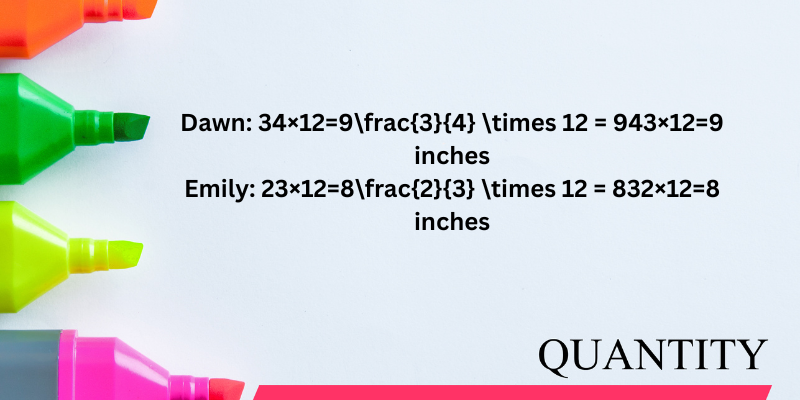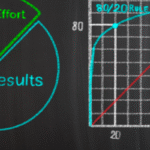When we analyze problems involving equal quantities and fair distribution, scenarios such as “Dawn and Emily each had the same length of ribbon” are often introduced in math problems to help build an understanding of fractions, measurement, and proportional reasoning. In this in-depth article, we will explore various mathematical concepts behind this scenario, break down problem-solving methods, and present numerous applications, extensions, and teaching tips.
Understanding Equal Ribbon Lengths: The Foundation
When we state that Dawn and Emily each had the same length of ribbon, we are beginning with a foundational concept of equality. In mathematical terms:
-
Let the length of ribbon each had be L.
-
So Dawn = L and Emily = L.
This basic equality paves the way for deeper inquiry into how each girl might have used, divided, shared, or compared their ribbon segments, either equally or differently.
Applying Fractions to Ribbon Problems
One of the most common uses of this ribbon scenario in education is to introduce or reinforce fractions.
Example Problem:
Dawn and Emily each had 12 inches of ribbon. Dawn used 3/4 of her ribbon. Emily used 2/3 of hers. Who used more ribbon?
To solve:
-
Dawn: 34×12=9\frac{3}{4} \times 12 = 9 inches
-
Emily: 23×12=8\frac{2}{3} \times 12 = 8 inches
Answer: Dawn used more ribbon than Emily.
This demonstrates proportional reasoning and provides a real-world context for students to compare fractions effectively.
Converting Units in Ribbon Length Problems
Sometimes, the ribbon lengths may be presented in different units, such as feet, inches, or even centimeters. Knowing how to convert between units is crucial.
Conversion Tip:
-
1 foot = 12 inches
-
1 inch = 2.54 cm
Example:
If Dawn has 1.5 feet of ribbon and Emily has 18 inches, do they have the same length?
-
Dawn: 1.5×12=181.5 \times 12 = 18 inches
-
Emily: 18 inches
Conclusion: Yes, they each had the same length of ribbon.
Comparing Used and Remaining Ribbon
Often, students are asked to determine not only how much ribbon was used, but also how much remains.
Example Problem:
Dawn and Emily each had 16 inches of ribbon. Dawn used 5 inches. Emily used 3 inches. Who has more ribbon left?
-
Dawn: 16−5=1116 – 5 = 11 inches
-
Emily: 16−3=1316 – 3 = 13 inches
Answer: Emily has more ribbon left.
This concept builds subtraction skills and logical comparison.
Equitable Sharing: Ribbon Cutting and Distribution
This scenario is also effective for discussing equal division or sharing. Suppose both girls wanted to divide their ribbon into equal parts.
Example:
Each girl has 24 inches of ribbon. They want to cut it into pieces of 4 inches each. How many pieces will each have?
-
24÷4=624 \div 4 = 6
Answer: Each will have 6 pieces of ribbon.
This teaches the important concept of division and is commonly used to prepare students for ratios and proportional relationships.
Advanced Problem: Variable Representation
More complex problems may include unknowns, perfect for introducing algebraic reasoning.
Example:
Dawn used x inches of her ribbon. Emily used twice as much as Dawn. If each had 30 inches, how much ribbon does Emily have left?
-
Dawn used = x
-
Emily used = 2x
-
Emily left = 30−2×30 – 2x
This type of formulation helps students transition from arithmetic to algebraic expressions and understand variables.
Visual Representation: Using Diagrams for Ribbon Problems
Bar models, tape diagrams, and number lines are powerful tools for representing ribbon problems visually.
Tip for Teachers:
Use diagrams to show:
-
Equal starting lengths
-
Portions used
-
Portions remaining
-
Comparisons between individuals
This approach supports visual learners and deepens conceptual understanding.
Word Problems with Real-Life Contexts
Adding context improves engagement and comprehension. Consider this:
Scenario:
Dawn and Emily each received 20 inches of ribbon for a school art project. Dawn used 1/2 for bows and Emily used 1/4 for a border. How much ribbon did each use and who used more?
-
Dawn: 20×12=1020 \times \frac{1}{2} = 10 inches
-
Emily: 20×14=520 \times \frac{1}{4} = 5 inches
Answer: Dawn used more ribbon than Emily.
This type of problem blends math with practical application, reinforcing the usefulness of the skill.
Extensions: Group Work and Collaborative Tasks
These ribbon problems can easily be scaled for group work, incorporating multiple students.
Group Scenario:
If four students each had 10 inches of ribbon, and each used different fractions (1/2, 1/3, 1/4, 1/5), how much total ribbon was used?
-
10×(12+13+14+15)10 \times \left(\frac{1}{2} + \frac{1}{3} + \frac{1}{4} + \frac{1}{5}\right)
-
Convert to common denominator and calculate.
This challenges students to work together and strengthens team-based problem solving.
Assessment and Reflection Questions
Use these to assess understanding:
-
Who used more ribbon and by how much?
-
How many pieces can you cut from a ribbon if each piece is 2.5 inches?
-
If Emily has twice the ribbon Dawn has, and Dawn has 18 inches, how much does Emily have?
Encouraging reflective thinking helps solidify concepts and improve retention.
Real-World Application: Measuring and Budgeting Materials
Understanding how to work with ribbon measurements applies to fields such as:
-
Fashion and garment design
-
Interior decorating
-
Crafting and gift wrapping
-
Event planning (balloons, streamers, etc.)
Students learn that math is not just abstract, but practically essential in many real-life careers.
Conclusion: Mastering Ribbon Length Problems Strengthens Core Math Skills
Whether used in a classroom or for home learning, the scenario of Dawn and Emily each having the same length of ribbon is a powerful tool for exploring a wide range of mathematical principles. From fractions, ratios, and algebra, to measurement, division, and unit conversions, this simple yet flexible context allows students to develop problem-solving strategies, think critically, and apply math in meaningful ways.



